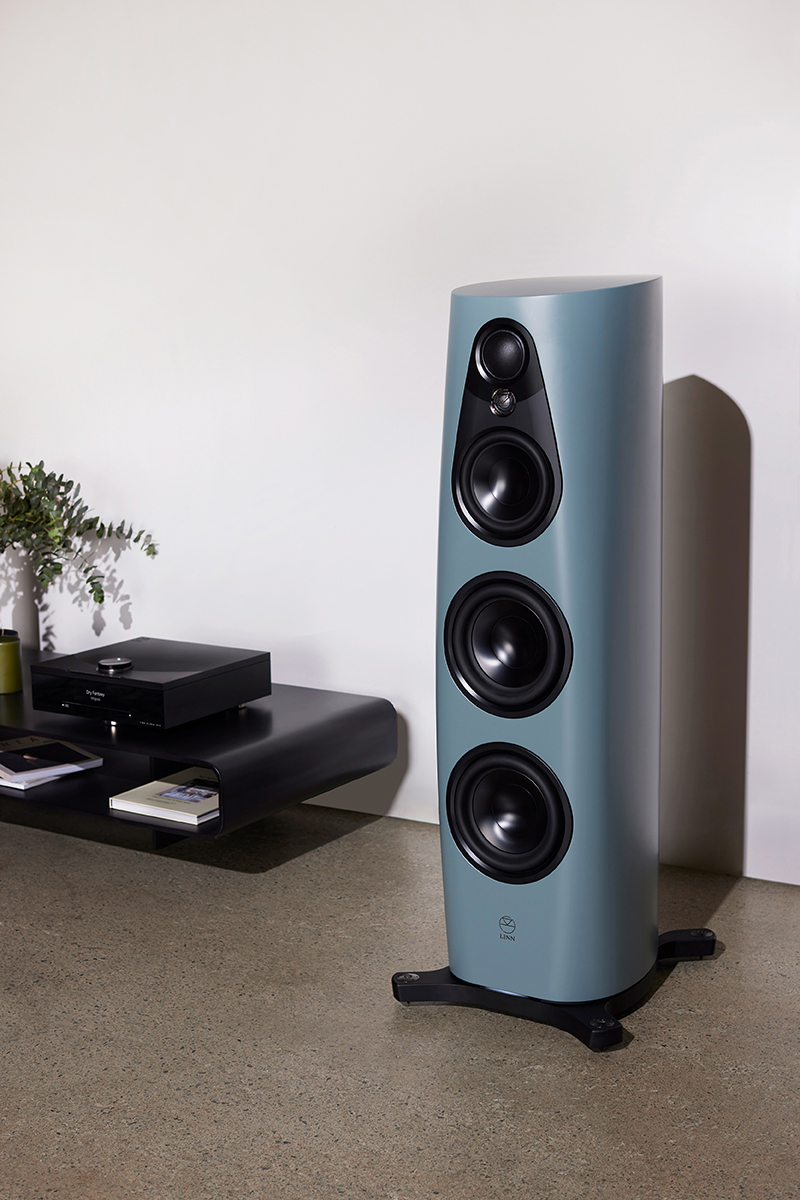Linn's flagship 360 is the "finest loudspeaker" it has ever made
Their performance is supposedly “streets ahead” of the company's previous benchmark

In its 50th-anniversary year, Linn has lifted the lid on a new flagship speaker which it says produces the lowest-ever levels of audible distortion of any Linn speaker past and present. Say hello to the Linn 360 (and look, not a quirky 'k' in the product name in sight!)
“It is without a doubt the finest loudspeaker we have ever made,” says Linn CEO Gilad Tiefenbrun, “streets ahead of our previous benchmark.”
This, the Scottish company says, has been achieved by developing new “everything”, from a new cabinet to new drive units.
The latter sees a 19mm Beryllium dome tweeter married with a woven carbon fibre midrange cone, both of which Linn says have been manipulated so that the distortion they inherently produce is pushed above what is audible by the human ear. Bass frequencies are delivered by both upper and lower aluminium-magnesium alloy bass drive units, with the pair of lower bass drivers able to produce greater range as well as more than double the excursion than Linn’s previous maximum.

Linn says that bass reproduction has been further improved thanks to its built-from-the-ground-up Power DAC technology, which combines digital-to-analogue conversion and amplification in one stage, consequently extending the digital path and reducing loss.
In addition to implementing Linn’s digital wizard Exakt system and Space Optimisation room correction technology too, the 360 speakers also introduce the company’s latest amplifier technology, Adaptive Bias Control, which works in real-time to eliminate distortion from the amps to ensure optimum performance.
The curvaceousness of the front baffle alongside the flushed placement of the drive units and a concentric arc, waveguide-incorporating surround trim have been chosen for optimum dispersion in every direction – perhaps hence the speakers' name.
The latest hi-fi, home cinema and tech news, reviews, buying advice and deals, direct to your inbox.

The shapely cabinet, which is built up from “scrupulously folded” 3D laminates and accommodates a front baffle that reaches right around either side of the speaker, can be finished in one of five colours – Clyde Built (matte grey), Single Malt (amber) or Linn Heritage (gloss black) from The Glasgow Collection, or Piano Black or Alpine White from The Classic Collection.
Two versions of the 360 are available, too. The first is the Exakt Integrated variant (£87,500), which as you might guess houses all the crossover, DAC and amplification circuitry within the speaker, and is designed for use with a Linn DSM network player. The second, meanwhile, is the Passive with Aktiv Bass (£55,000), designed for use with a non-Linn amplifier or an all-external Linn Exakt system using Exaktbox.
MORE:
As Linn turns 50, we pick the 13 best Linn products ever made
Read our Linn Selekt DSM: Edition Hub review
Best hi-fi systems 2023: micro, vinyl and streaming music systems for the home

Becky is a hi-fi, AV and technology journalist, formerly the Managing Editor at What Hi-Fi? and Editor of Australian Hi-Fi and Audio Esoterica magazines. With over twelve years of journalism experience in the hi-fi industry, she has reviewed all manner of audio gear, from budget amplifiers to high-end speakers, and particularly specialises in headphones and head-fi devices.
In her spare time, Becky can often be found running, watching Liverpool FC and horror movies, and hunting for gluten-free cake.
